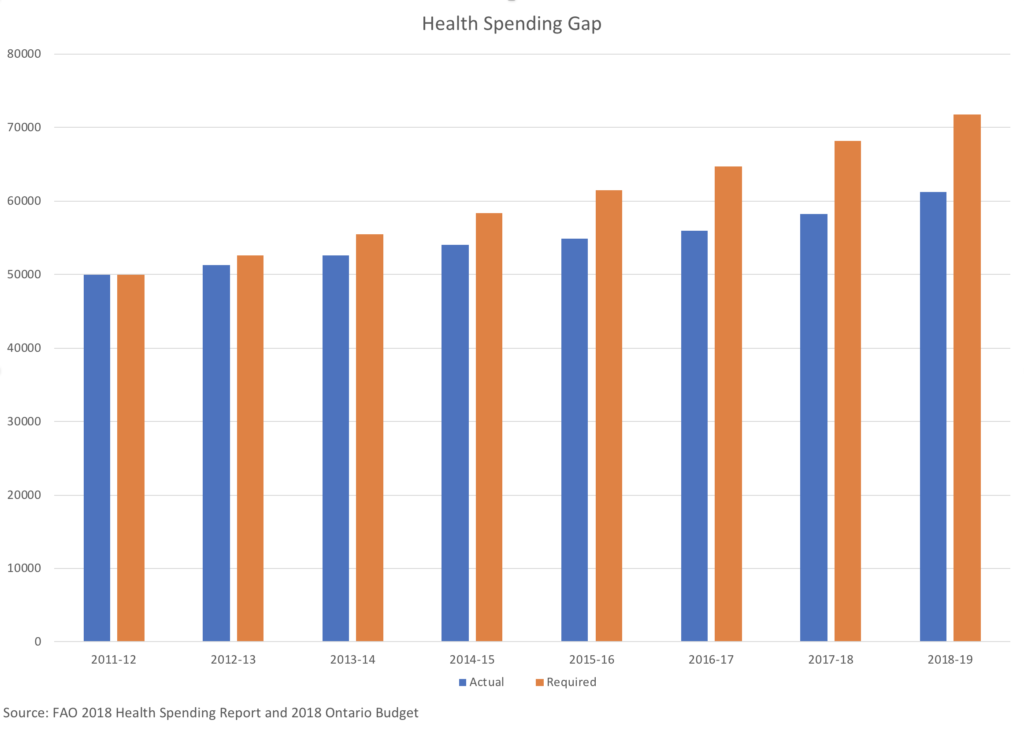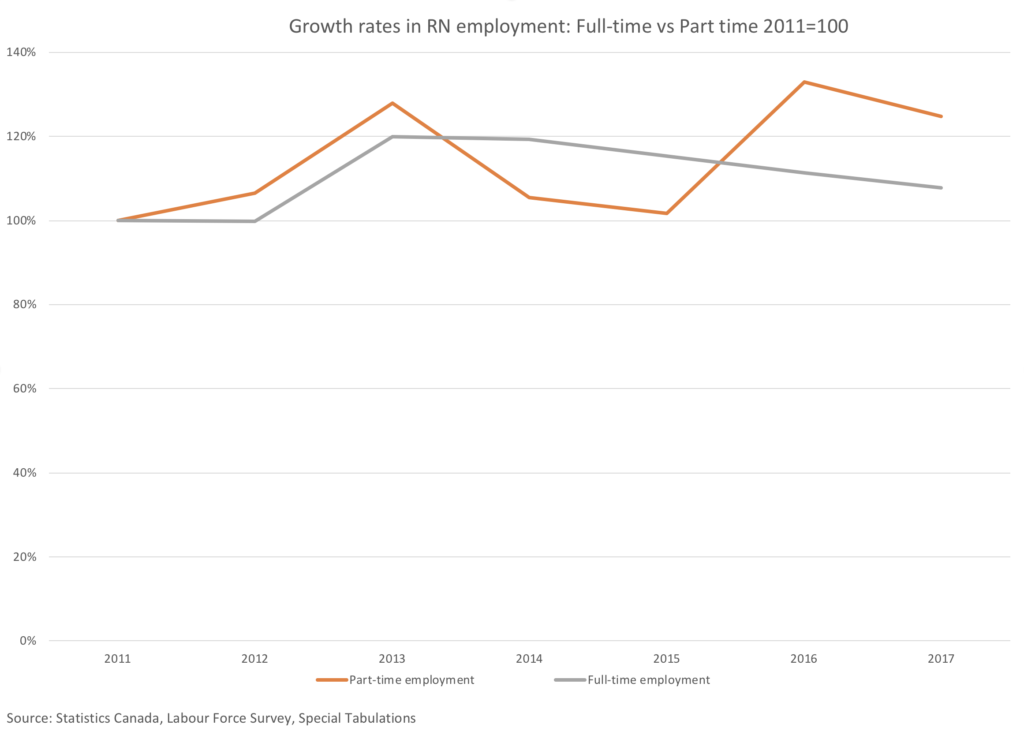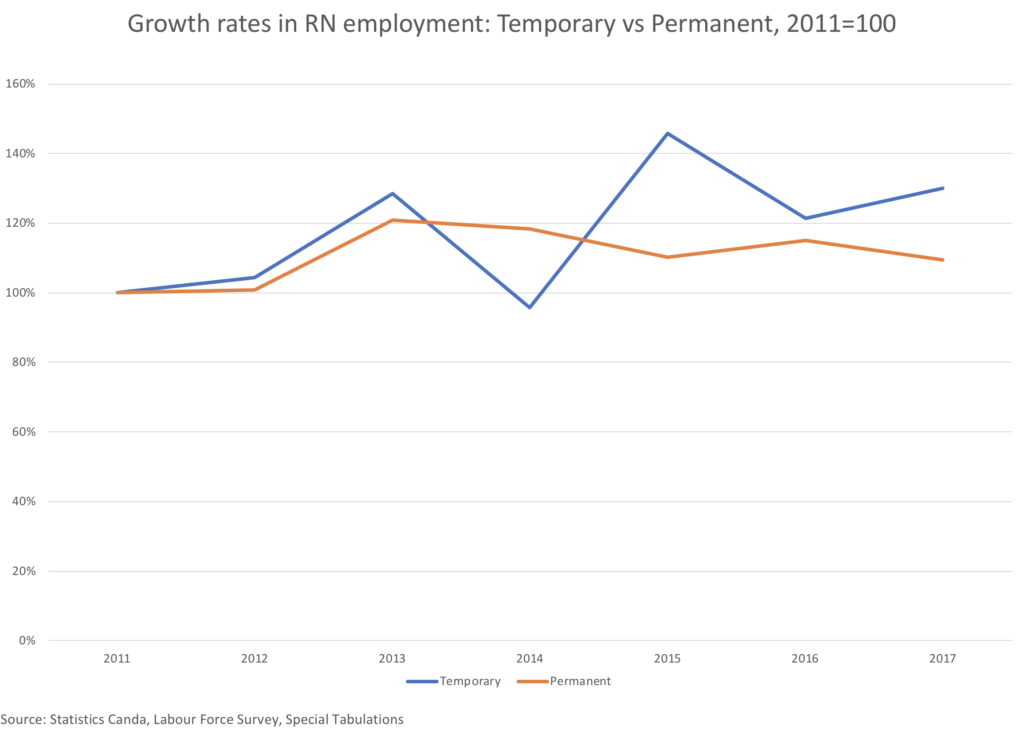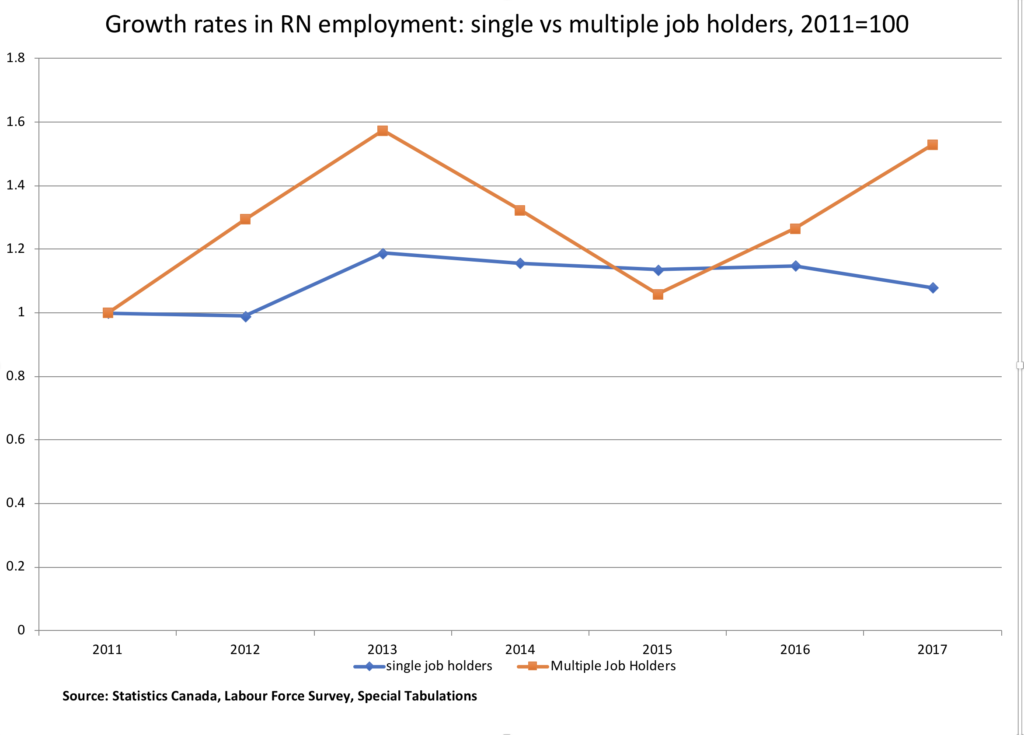 This winter, a bad flu season that resulted in overcrowded emergency rooms shone a light on the need for a reinvestment in Ontario’s health care system.
This winter, a bad flu season that resulted in overcrowded emergency rooms shone a light on the need for a reinvestment in Ontario’s health care system.
There were crushing workloads for nurses and health care workers, whose jobs are becoming increasingly precarious—thanks to austerity measures.
Starting in 2012-13, the Ontario government began an austerity program aimed at eliminating the deficit by cutting spending. Reducing health spending bore the lion’s share of that burden.
Inflation, population growth, an aging population, and advances in health care drive health care cost increases. There is a broad consensus that these costs grow at a pace just above 5 per cent. This has been acknowledged by provincial ministers of health and finance (including Ontario) during health transfer negotiations, the Parliamentary Budget Office, and Ontario’s Financial Accountability Office (FAO). The FAO estimates health care costs increase in Ontario by 5.3 per cent per year.
The current government began to reinvest in the health care sector in 2017-18, but there is much to repair in the system—the result of self-imposed wounds.
Estimated funding gap
Chart 1 shows the gap between current health care spending and where health care spending would be if it had grown by 5.3 per cent per year. It shows that, despite the increases in funding over the last two years, the funding gap is $10.4 billion in 2018-19.

In other words, just to keep up with population growth, an aging population, and inflation, Ontario should be spending $10.4 billion more annually on health care right now.
Impact on RN workforce
This squeeze on health care funding has been accompanied by a decrease in the registered nurses (RN) workforce. The Canadian Institute for Health Information (CIHI) estimates that number of RNs in Ontario dropped from 106,889 in 2011 to 104,775 in 2016. Ontario has the lowest RN to population ratio in the country. The Ontario Nurses’ Association has just revealed that there are more than 10,000 vacant RN positions in Ontario hospitals.
Rise in precarious work for RNs
These years of austerity have had a negative impact on the working conditions for RNs, as well as the number of RNs who are working. Precarious employment is characterized by reduced job security, stability, as well as lower incomes and fewer benefits. It is on the rise in Ontario. While precarious work is concentrated in low-wage, lower-skilled occupations, there is growing awareness of precarious employment for professionals.
Precarious work has a number of negative health impacts including those associated with stress, uncertainty and lower incomes. In and of itself, that should be a concern.
However, we also know that precarious work for RNs can have a negative impact on their patients. It seems like the lessons from SARS are beginning to be forgotten.
Special tabulations from Statistics Canada’s Labour Force Survey show the trends of increased precarity in RN employment associated with this period of austerity from 2011 to 2017.
Chart 2 shows an index of growth in full-time and part-time work for RNs since 2011. It shows that part-time employment grew more quickly than full-time employment. By 2017, part-time employment was 25 per cent above the 2011 level, compared to 8 per cent for full-time employment.

Chart 3 compares the growth rates of temporary and permanent employment between 2011 and 2017. While temporary employment remains a small share of total RN employment, it has been growing more quickly than permanent employment.
Temporary RN employment in 2017 was 30 per cent above 2011 level, compared to 10 per cent for permanent RN employment.

Chart 4 shows a similar pattern for multiple vs. single job holders. While RNs with multiple jobs remain a small share of the total, they are growing more quickly than single job holders.

While Statistics Canada provides data on RNs’ employment, the College of Nurses of Ontario collects data on the number of nursing positions.
Chart 5 shows the share of RN positions between 2011 and 2017. It illustrates the shift from full-time to part-time positions over this period. Full-time positions dropped from 59.2 per cent of the total to 56.4 per cent. It also shows a slight increase in in the share of casual positions.

The three major parties’ stance on health care
There is an urgent need to continue investments in Ontario’s health care system. It is important to evaluate the health policy and program proposals during the election period. But, an important measure of that commitment is the dollars that are allocated to those proposals:
- In its recent budget, the Liberal government promises to grow health care spending by an average of 4.5 per cent per year between 2017-18 and 2020-21.
- In its platform, the NDP has committed to annual increases averaging 5.8 per cent from 2017-18 to 2020-21.
- The PC party has committed to the increase in mental health funding by $1.9 billion over 10 years. It has also committed to an additional 30,000 long-term care beds. Yet PC party Leader Doug Ford has talked about a 4 per cent cut in expenditures. Health care accounts for about 40 per cent of program expenditures, so he would be hard pressed to meet that goal without including the health care budget. That could reduce health care spending by about $2.4 billion. This would mean that health care funding would fall a further 9.3 per cent from where it should be.
Nurses and health care workers are the heart and soul of Ontario’s public health care system. They’ve been doing more with less, but new investments in the system—and the workers who make the system tick—are required to keep up with a growing and aging population.
Sheila Block is a senior economist with the Canadian Centre for Policy Alternatives’ Ontario office. Follow Sheila on Twitter: @SheilaBlockTO.







